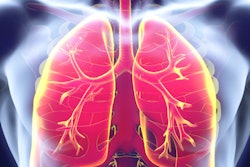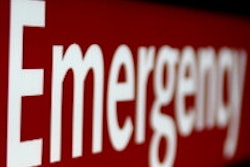
New guidelines for the appropriate use of diagnostic imaging for chest pain have been released by the American College of Cardiology, the American College of Radiology, and several other societies, according to a report published online January 22 in the Journal of the American College of Cardiology and the Journal of the American College of Radiology.
The paper examines 20 basic clinical scenarios for emergency department (ED) imaging for chest pain and evaluates when imaging is useful. For useful exams, the authors describe what information is provided by each procedure for the diagnosis of acute coronary syndrome, pulmonary embolism, and acute aortic syndrome. A fourth category, triple-rule-out imaging with CT, is included for the minority of patients for whom a leading diagnosis is not possible.
"This document captures a wide scope of those patients who come to the emergency department with chest pain, although there will always be patients who present unique situations, and no document can be a substitute for clinical judgment," lead author and writing group chair Dr. Frank Rybicki said in a statement accompanying release of the guidelines.
Patients reporting to the ED with chest pain are the second largest component of all patients presenting to emergency departments, representing more than 5% of the 130 million emergency department visits in a 2010 study, according to the authors.
"In the patient presenting with undifferentiated [chest pain], the spectrum of potential etiologies ranges from serious, immediate, life-threatening pathologies such as acute coronary syndromes (ACS), pulmonary embolism (PE), or acute aortic syndromes (AAS) to relatively benign illness without long-term consequences (such as costochondritis) and poses a great challenge to the caregiving physician," they wrote (JACR and JACC, January 22, 2015).
Imaging appropriateness considers two questions, the group noted:
- Is any imaging justified for the 20 clinical scenarios that categorize patients after a medical history, a physical exam, and ancillary testing have been obtained?
- If imaging is justified, what meaningful incremental information will an imaging procedure provide?
When more than one imaging study is deemed appropriate for a clinical scenario, the methods do not consider preferred individual modalities among all of those rated appropriate. Rather, when deciding on the best test, if any, clinicians should consider all factors including cost, availability, and expertise, Rybicki and colleagues wrote.




















